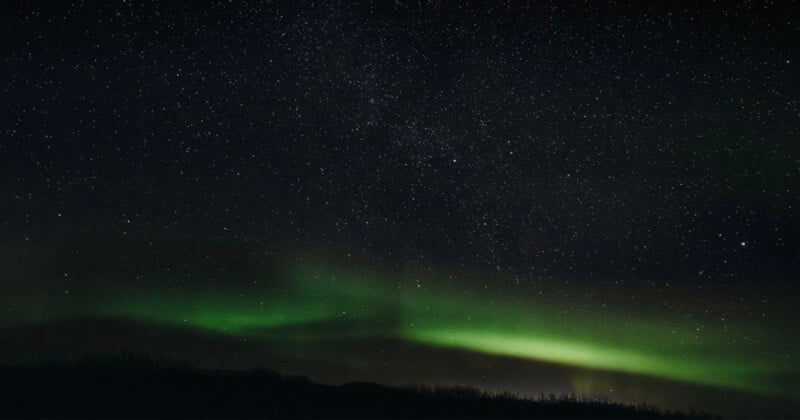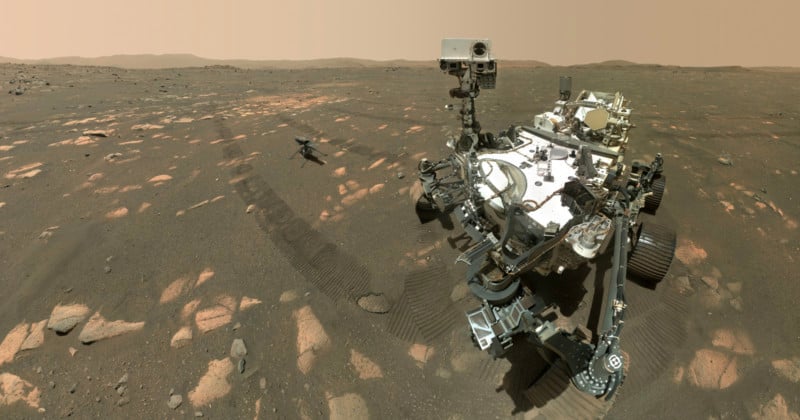The First-Ever Picture of Aurora Lights on Mars Captured by Perseverance Rover

NASA’s Perseverance rover has detected visible auroras on Mars, marking the first time the lights have been witnessed from the surface of another planet.
The observation occurred after a solar flare and coronal mass ejection (CME) erupted from the Sun on March 15, 2024, near the peak of the current solar cycle. These events released a burst of solar energetic particles (SEPs), which triggered auroras across multiple locations in the solar system—including Mars, according to the Jet Propulsion Laboratory.
“This exciting discovery opens up new possibilities for auroral research and confirms that auroras could be visible to future astronauts on Mars’ surface,” says Elise Knutsen, a postdoctoral researcher at the University of Oslo and lead author of the Science Advances study reporting the findings.
Different Auroras, Different Planet
On Earth, auroras typically appear near the poles due to the planet’s global magnetic field channeling solar particles into the atmosphere, where they interact with gases to produce visible light which is most commonly green.
Mars, which lacks a global magnetic field, experiences auroras differently. One type, the SEP aurora, occurs when high-energy solar particles interact directly with the Martian atmosphere, causing a planet-wide glow. Until now, SEP auroras had not been seen in visible light from the surface.
With solar activity increasing toward solar maximum, Knutsen and her team aimed to capture visible signatures of these auroras using Perseverance’s onboard SuperCam spectrometer and Mastcam-Z camera.

Targeting a Solar Storm
To capture the aurora, the research team calculated the necessary viewing angles and awaited a suitable solar event.
“The trick was to pick a good CME, one that would accelerate and inject many charged particles into Mars’ atmosphere,” says Knutsen.
On March 15, 2024, space physicist Christina Lee at the University of California, Berkeley — part of the MAVEN (Mars Atmosphere and Volatile EvolutioN) mission team — received an alert about an incoming CME that could reach Mars within days. Lee issued a Mars Space Weather Alert Notification to operational missions, including Perseverance and MAVEN.
“This allows the science teams of Perseverance and MAVEN to anticipate impacts of interplanetary CMEs and the associated SEPs,” Lee adds.

Knutsen’s team predicted that the strength of the event might produce auroras bright enough to detect in visible light. When the CME reached Mars, Perseverance captured a widespread green glow at the 557.7 nm wavelength.
Confirmation Across Missions
To validate that the visible emissions were caused by SEPs, the team consulted data from MAVEN’s SEP instrument. These findings were supported by observations from the European Space Agency’s Mars Express mission, which confirmed elevated SEP levels during the time of the aurora.
“This was a fantastic example of cross-mission coordination. We all worked together quickly to facilitate this observation and are thrilled to have finally gotten a sneak peek of what astronauts will be able to see there some day,” says Shannon Curry, MAVEN principal investigator and researcher at the University of Colorado Boulder’s Laboratory for Atmospheric and Space Physics (LASP).
Implications for Future Exploration
The detection suggests that future astronauts on Mars could witness auroras similar to those on Earth. The findings also offer a new method of studying auroras on Mars using ground-based instruments.
“Perseverance’s observations of the visible-light aurora confirm a new way to study these phenomena that’s complementary to what we can observe with our Mars orbiters,” says Katie Stack Morgan, acting project scientist for Perseverance at NASA’s Jet Propulsion Laboratory in Southern California.
“A better understanding of auroras and the conditions around Mars that lead to their formation are especially important as we prepare to send human explorers there safely.”
Image credits: Header photo licensed via Depositphotos.